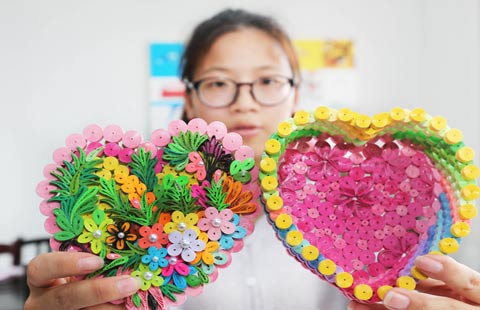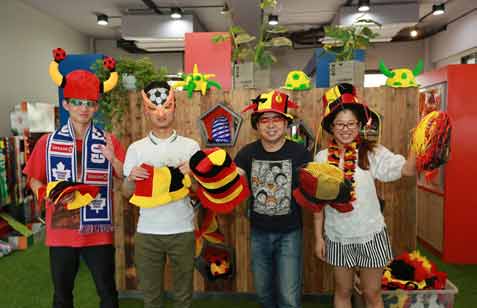From herdsman to entrepreneur
(Xinhua) Updated: 2012-11-22 16:42Childhood dreams
It was this natural talent that allowed Bai to hope and dream of a better existence during a childhood in which she characterizes herself as "a wild child on the steppe."
Born in Aolibugao Village in Tongliao in 1968, Bai was the youngest of five children. In the winter, she skated on the frozen river, played with ice cubes and looked for pheasants' eggs, while summer found her dabbling in water at the river's edge all day long.
On the way from her yurt to the river, she was often dazzled by the mushrooms and vegetation growing on the steppe. Her favorite wild flower was the saralan, or coral lily, for it was "always strong and always elegant." So in 2010, she called her company Saralan.
In the 1970s, as a maverick to her teenager friends, she dressed the way she liked, took daily photographs with her brother's camera, and "was dying to be an artist after graduation."
But life challenged her ideal. After high school, she failed to pass exams to enter a local art college. She eventually managed instead to learn art design on her own when she became the art teacher at a junior high school in Baolongshan, a small town in eastern Inner Mongolia.
She thought that her education and teacher's income would one day allow her to achieve her dream of being an artist full time.
After being laid-off in the 1990s, She and her husband opened a small grocery store in the train station, struggling to make ends meet with the 10,000 yuan they made annually.
At the grocery store, Bai used to stare at the hustle and bustle of people on the station platforms, and soon realized she couldn't bear killing time by just "sitting there and watching the clock ticking. My artistic dream was alive in my heart."
Folk art for today
She designed and sewed clothes for her son, then in elementary school. She also made leather paintings, applying the traditional Mongolian folk art she learned from her parents and grandparents in her childhood.
This retro style runs through her art, and Bai explains, "I used to see so many old-fashioned things in daily use like cigarette bags and sheep's horn knives, but now they are missing in life. In my work, I try to resurrect aspects of Mongolian traditional art."
She shows off a chestnut-brown suede shoulder bag fashioned like the C-shape dragon totem of a Neolithic culture, with a sheep's bone button. On the edges of the bag are strips with the Tibetan "eternal knot" which originated in Buddhism and often decorated Mongolian saddles.
Bai's studio in Tongliao City is filled with the products of her imagination. The leather collection varies from Mongolian paintings, to bags, to saddles, to notebooks. All are carved with traditional Mongolian characters or totem symbols, and are decorated with oracle bones and cattle horns.
Bai's friend, Zhang Yuqing, head of the local Women's Union in Tongliao, says, "Her art is the way she expresses herself. She is so kind that she lets anyone else see her pain. When she is sorrowful, she hides it. She'd rather carry the whole burden by herself and smile to the world."
"I might lose this shop too, someday, but I will never give up my dream," Bai wrote in her blog. She is not merely an artist. She has learned accounting and business management, creating a company while living with a tight schedule every day.
"I'm a mother first, then an artist, and finally a female entrepreneur," she summarizes.
- Court ruling boost Chinese entrepreneurs' confidence
- Entrepreneurs' presence grows at CPC congress
- Costly love affairs of entrepreneurs
- Make-your-own soap entrepreneurs clean up
- Entrepreneurs showing their business acumen amid economic challenges
- Liuzhou welcomes women’s entrepreneur forum
- Women entrepreneurs to meet in Liuzhou
- China remains biggest chemical fertilizer exporter to Nepal
- Renminbi internationalization makes new strides
- Jaguar Land Rover to recall 11,282 vehicles
- Nationwide fitness plan to boost sports industry
- BYD joins lithium mining in west China's Salt Lake
- More wealthy Chinese demands global asset allocation: report
- US steel industry overprotected: China's commerce ministry
- Booming investment in US a sign of China's economic upgrade


















